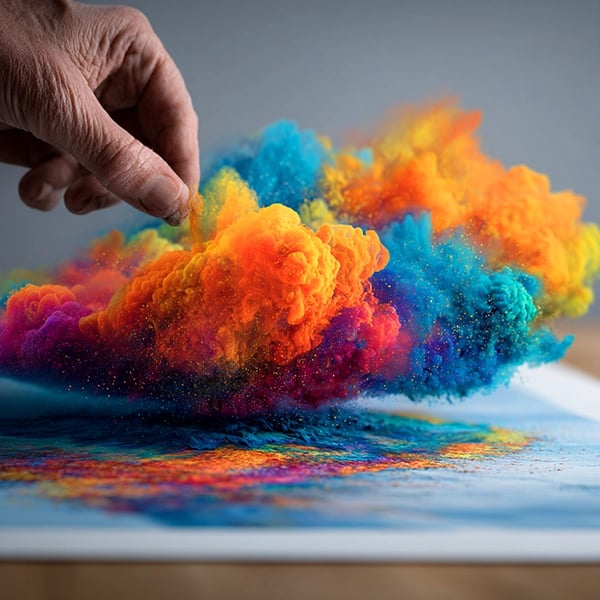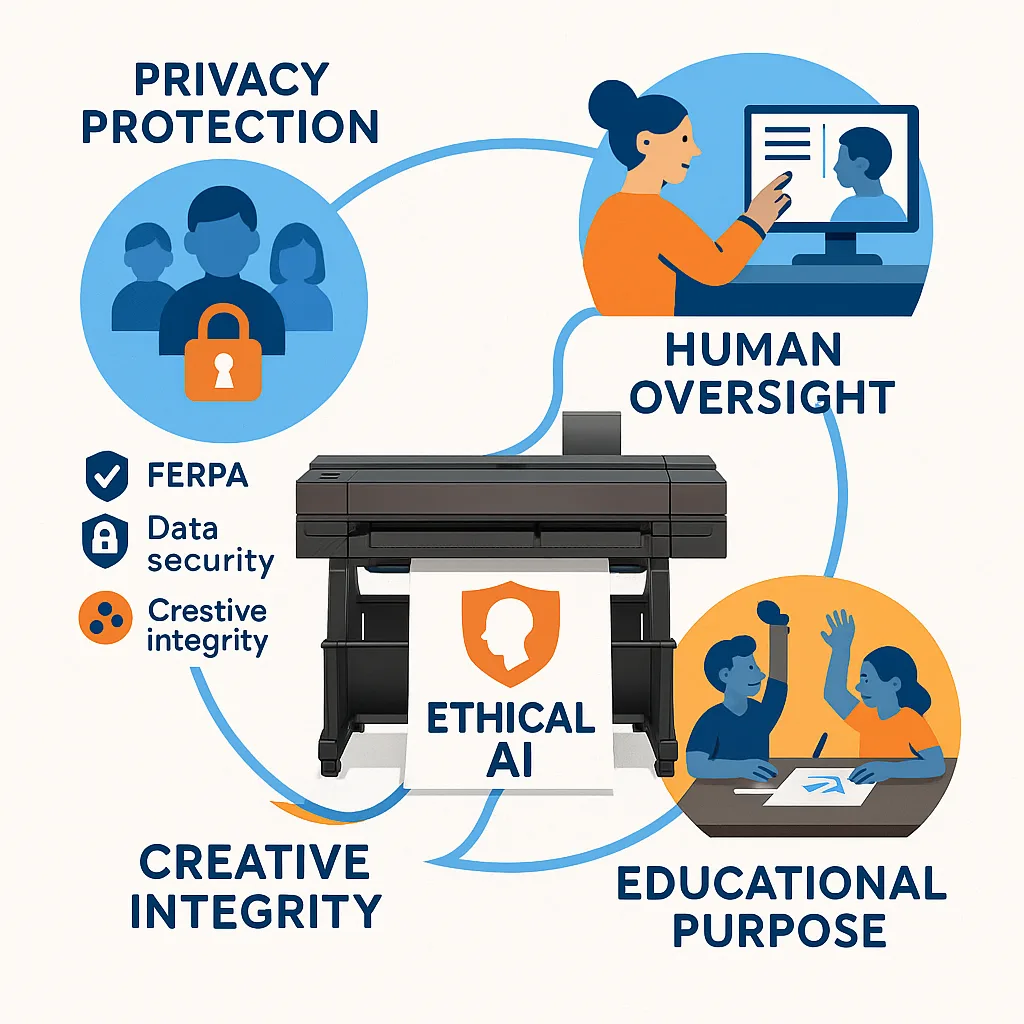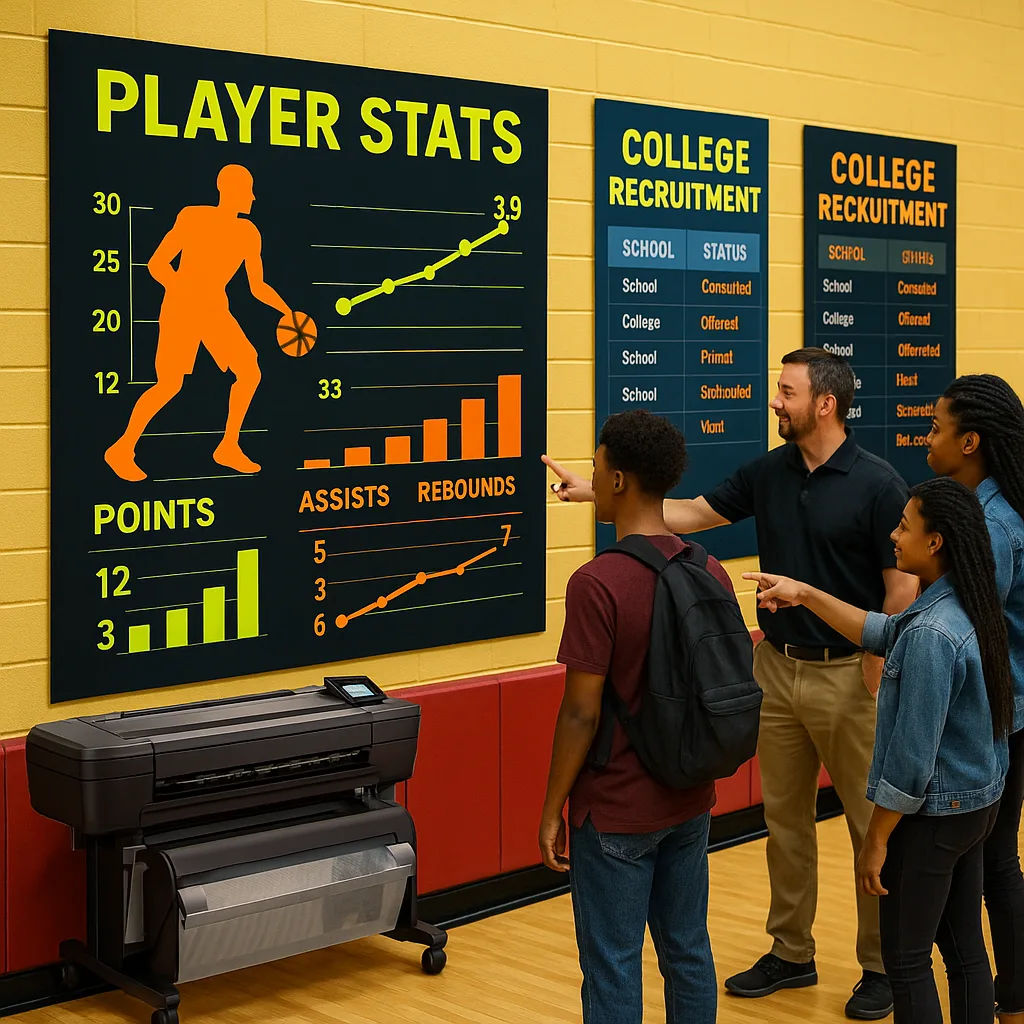
Understanding AI’s Role in Educational Visual Design
AI tools have burst onto the educational scene like confetti at a school celebration—colorful, exciting, and slightly overwhelming. According to recent research from the International Society for Technology in Education (ISTE), 73% of educators now use some form of AI in their classroom activities. Yet most lack formal training in AI ethics and responsible use.
This gap becomes particularly pronounced when creating visual materials. While a color poster maker provides the hardware to produce stunning educational visuals, AI tools promise to streamline the design process itself. However, this convenience brings responsibility.

The Privacy Imperative: Protecting Student Data
Every time we input student information into an AI tool, we’re making a decision about data privacy. The Family Educational Rights and Privacy Act (FERPA) doesn’t just apply to traditional records—it extends to any personally identifiable information, including images or names used in poster designs.
Color Poster Maker AI Ethics: Establishing Clear Guidelines
Creating ethical guidelines for AI-assisted poster design isn’t just about rules—it’s about fostering responsible digital citizenship. Research from the Journal of Medical Internet Research shows that students who learn AI ethics early demonstrate better judgment in technology use throughout their academic careers.
Consider implementing these core principles when using AI with your school’s poster-making equipment:
Transparency First: Always disclose when AI assistance was used in creating educational materials. This teaches students about intellectual honesty while modeling ethical behavior.
Human Oversight: AI should enhance, not replace, human creativity and judgment. Every AI-generated design should pass through educator review before printing.
Purpose-Driven Use: Ask yourself: Does using AI for this poster serve an educational purpose, or is it merely convenient? The answer guides ethical decision-making.
Practical Implementation: From Theory to Classroom Reality
Let’s translate these principles into actionable steps. When you’re ready to create that next stunning visual with your poster maker machine for schools, consider this implementation framework:
1. Tool Vetting Process
Before introducing any AI tool, conduct a thorough review. Check privacy policies, data retention practices, and terms of service. Tools that claim ownership of generated content or use input data for training should raise red flags.
2. Student Involvement Guidelines
When students participate in AI-assisted design, establish clear boundaries. Never input personal photos, full names, or identifying information. Instead, use generic placeholders that can be customized after generation.
3. Attribution Standards
Develop a consistent attribution system for AI-assisted work. Something as simple as “Design enhanced with AI assistance” maintains transparency without diminishing the human creative element.
Teaching Digital Citizenship Through Poster Creation
Every poster created becomes a teaching moment. The Common Sense Education framework emphasizes that digital citizenship isn’t taught in isolation—it’s woven through authentic activities. When students see you navigating AI ethics thoughtfully, they internalize these practices.
Critical Thinking
Students learn to evaluate AI suggestions criticallyQuestion Everything
Teach students to ask: Is this accurate? Is it appropriate? Does it align with our values? Critical evaluation becomes second nature.Creative Integrity
AI enhances but doesn't replace creativityOriginal Thinking
Students understand that AI is a tool, not a substitute for their unique perspectives and creative vision.Ethical Awareness
Understanding impact and implicationsResponsible Use
Students develop awareness of bias, privacy, and the broader implications of AI technology use.Navigating Common Ethical Challenges
Real-world scenarios help illustrate ethical decision-making. Consider these situations many educators face:
Scenario 1: The Time Crunch
It’s Thursday night, and you need welcome posters for tomorrow’s open house. AI could generate them in minutes, but is speed worth compromising your standards? The ethical choice: Use AI for initial concepts, then personalize with school-specific elements. This maintains efficiency while ensuring authenticity.
Scenario 2: Student Portfolio Work
A student wants to use AI to enhance their art project poster. Rather than saying no, guide them through proper attribution and discuss how AI complemented their original ideas. This teaches responsible use while validating their initiative.
Scenario 3: Budget Constraints
Your department can’t afford professional design services, but you have access to a quality printer. Here, AI becomes an equalizer, helping create professional materials while respecting poster maker machine for schools cost considerations.
Data from EdTech Research Institute, 2024
Best Practices Checklist for Ethical AI Poster Design
After Generation:
✓ Review for accuracy and bias
✓ Add proper attribution
✓ Personalize with school elements
✓ Verify educational alignment
✓ Store files securely
Long-term Practices:
✓ Regular policy updates
✓ Ongoing professional development
✓ Student feedback integration
✓ Community transparency
✓ Ethical reflection sessions
Before Design:
✓ Review tool’s privacy policy and terms
✓ Ensure FERPA compliance
✓ Set clear learning objectives
✓ Prepare non-identifiable content
✓ Brief students on ethical considerations
During Creation:
✓ Maintain human oversight
✓ Document AI assistance levels
✓ Encourage original thinking
✓ Model critical evaluation
✓ Respect intellectual property
Moving Forward: Your Next Steps
Ethical AI integration doesn’t happen overnight. Start small with these actionable steps:
1. Audit Current Practices: Review how AI is currently used in your school’s visual design process
2. Draft Initial Guidelines: Create a simple one-page policy for AI tool usage
3. Test and Iterate: Try ethical AI practices with one project before scaling
4. Share and Learn: Connect with other educators navigating similar challenges
5. Invest Wisely: Consider how tools like the Education Flex 30 support both traditional and AI-enhanced creativity
Remember, you’re not just teaching poster design—you’re shaping digital citizens who will navigate an AI-integrated world with wisdom, creativity, and integrity. Every ethical choice you make today ripples into their tomorrow.







